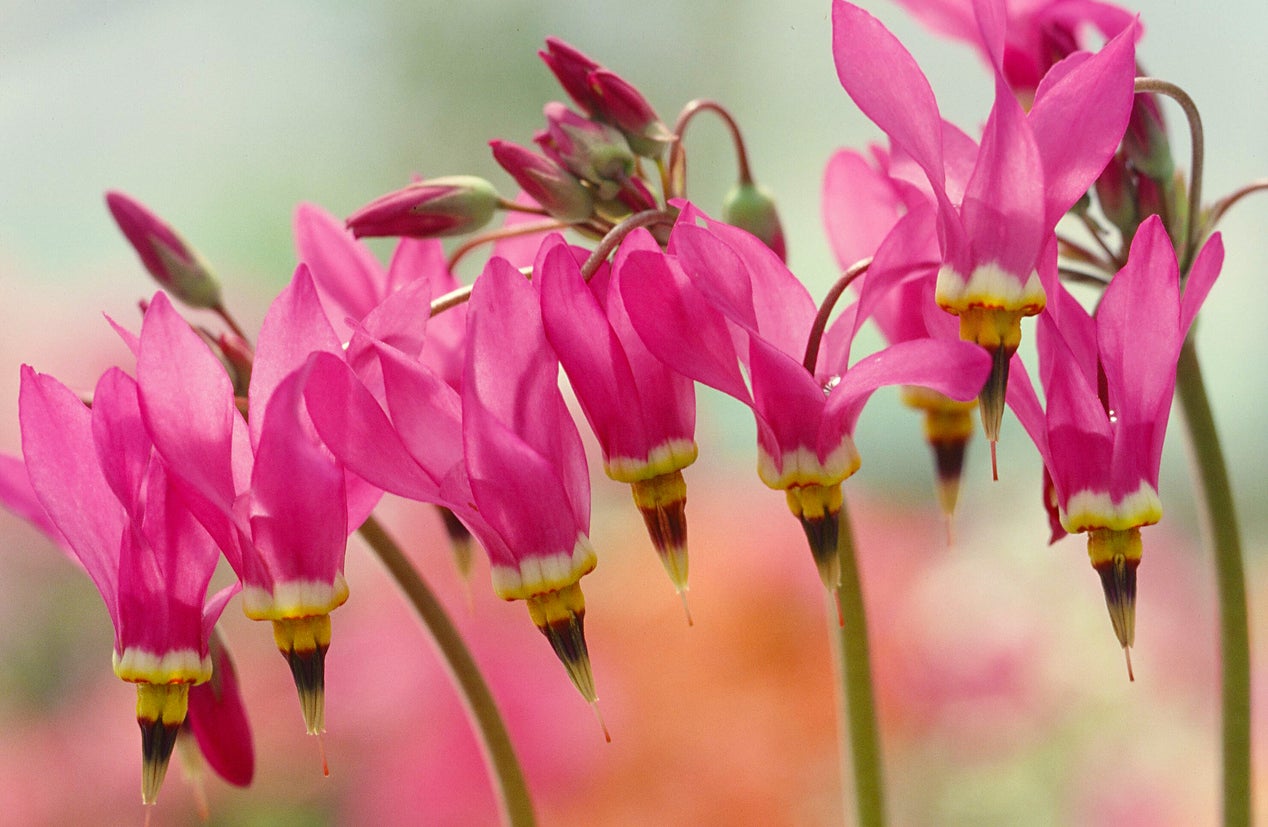Shooting Star Watering Guide: How To Water A Shooting Star Plant


Whether you’re thinking of growing shooting star plants (Dodecatheon) in the garden or you already have some in the landscape, watering a shooting star properly is an important aspect to consider. Keep reading for information on the watering needs for this plant.
Shooting Star Water Needs
This herbaceous perennial with showy, uplifted blooms grows in the woodlands. It is native to Missouri, but spreads throughout much of the forest of the Central and North Eastern states. This plant grows as far west as Arizona, south to Mexico, and north to Alaska. The shooting star plant also grows in the Pacific Northwest. As it is accustomed to growing in the shade on the forest floor, it is watered by rain. Shooting star water needs in the garden should mimic this rainfall, which will vary depending on its growing conditions and location. Therefore, shooting star watering should be similar to rainfall in your area. The plant is adaptable, but generally likes to be in moist soil. The plant sometimes grows in moist soils, sometimes wet, and along streams and rivers, so you’ll find it adaptable to a number of places in your garden. If you’re fortunate enough to have these plants in your landscape, keep an eye on their growth and let this be your guide.
How to Water a Shooting Star Plant
Several varieties of this plant grow in different areas, leading to a range of watering needs for shooting star. About 14 species grow in various areas of the U.S. There is even a type that grows in Siberia. The dark-throated types need well-drained alkaline soils and can take more sun than other types that grow in the eastern forests. If you’re just starting out, this plant will tolerate clay soil but grows best if it is first amended. Grow this specimen in a mostly shady area such as under trees or in a woodland garden area. Filtered sunlight through the branches along with moist soil preceding its late spring bloom ensures the best flowers on your shooting star. Grow shooting star with plants that have similar watering needs. For instance, plants in the Primula family and hostas are attractive companions. When planting shooting star, either in spring or fall, keep the soil moist for about six weeks. Otherwise, foliage of these plants goes dormant following the bloom period. During this time of dormancy, watering a shooting star is not necessary. Use a layer of mulch to help keep the soil moist. A good soaking during and after a summer drought encourages roots to take in necessary nutrients.
Sign up for the Gardening Know How newsletter today and receive a free copy of our e-book "How to Grow Delicious Tomatoes".

Becca Badgett was a regular contributor to Gardening Know How for ten years. Co-author of the book How to Grow an EMERGENCY Garden, Becca specializes in succulent and cactus gardening.